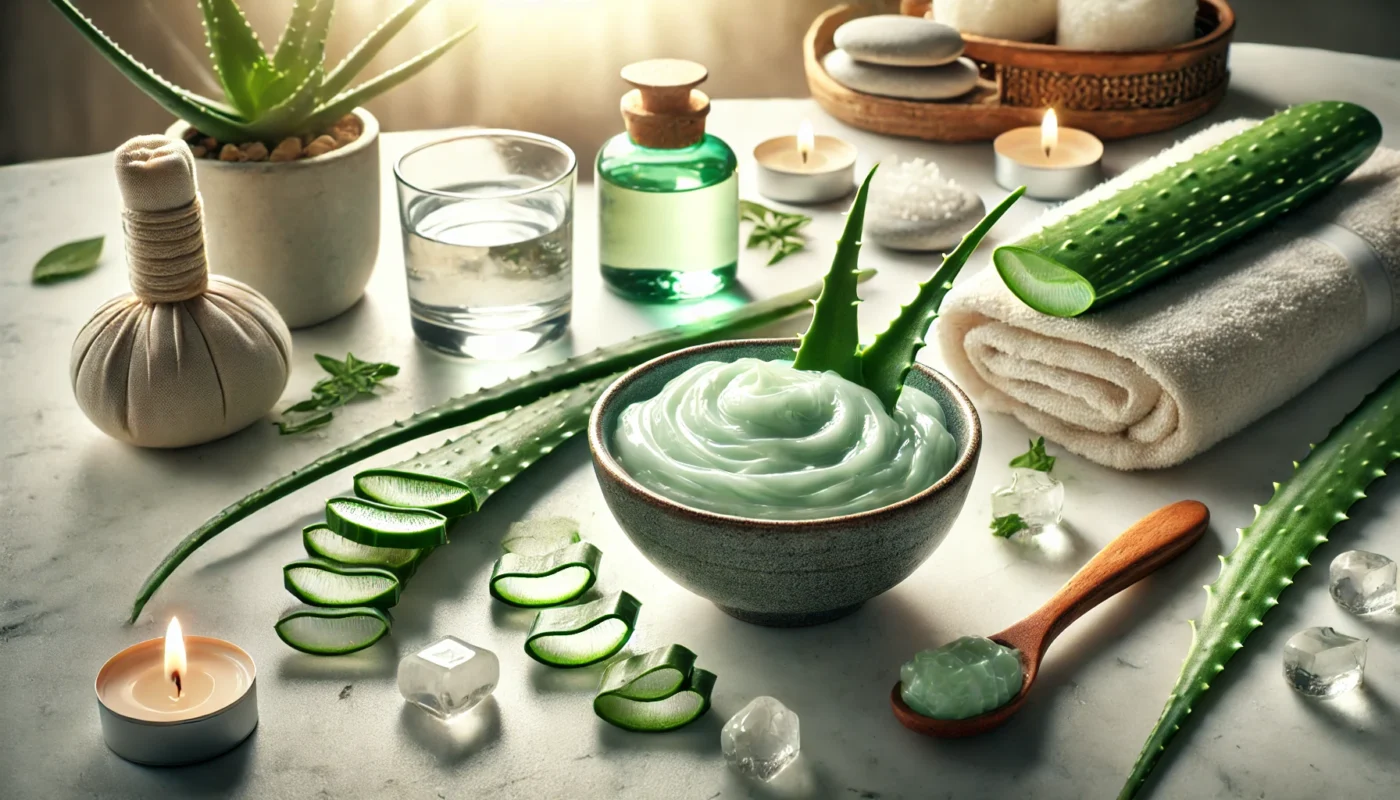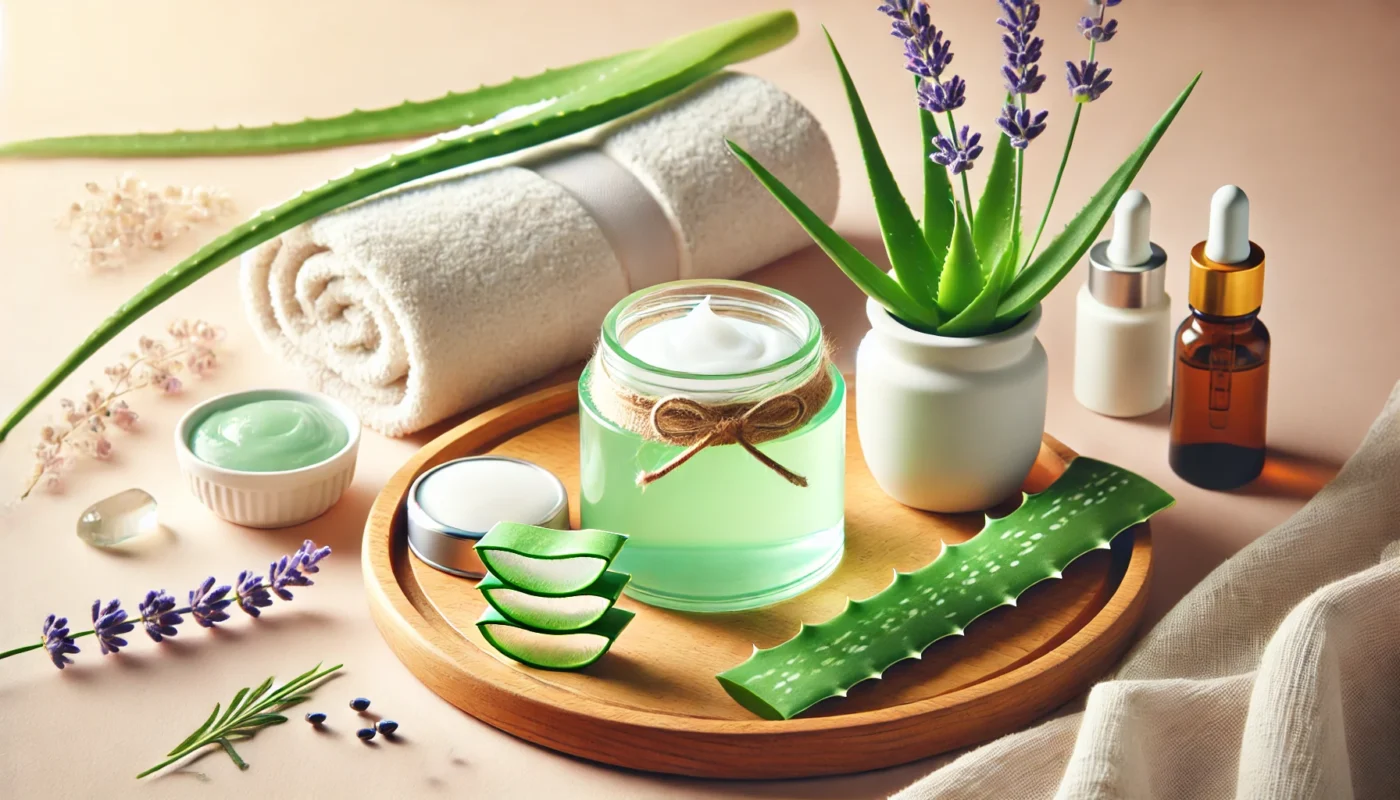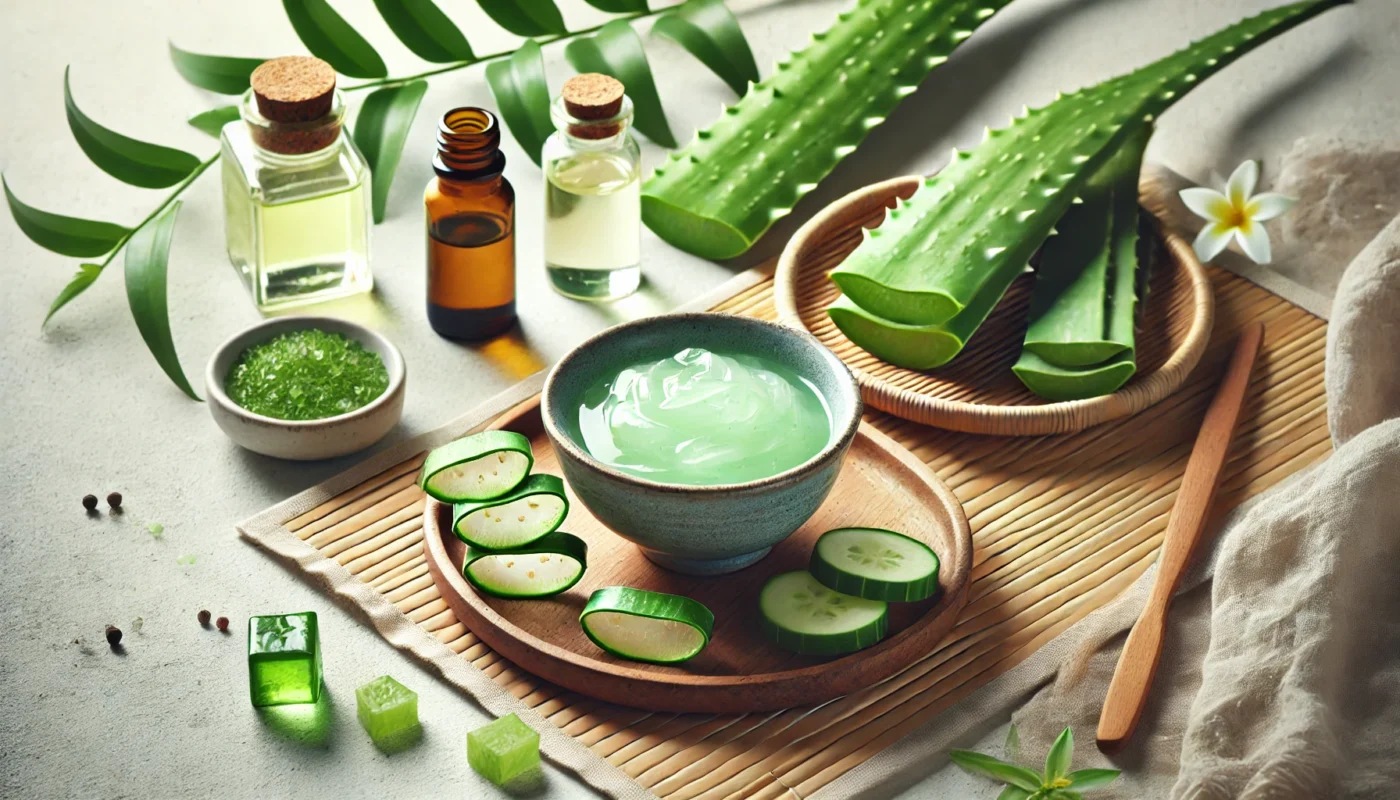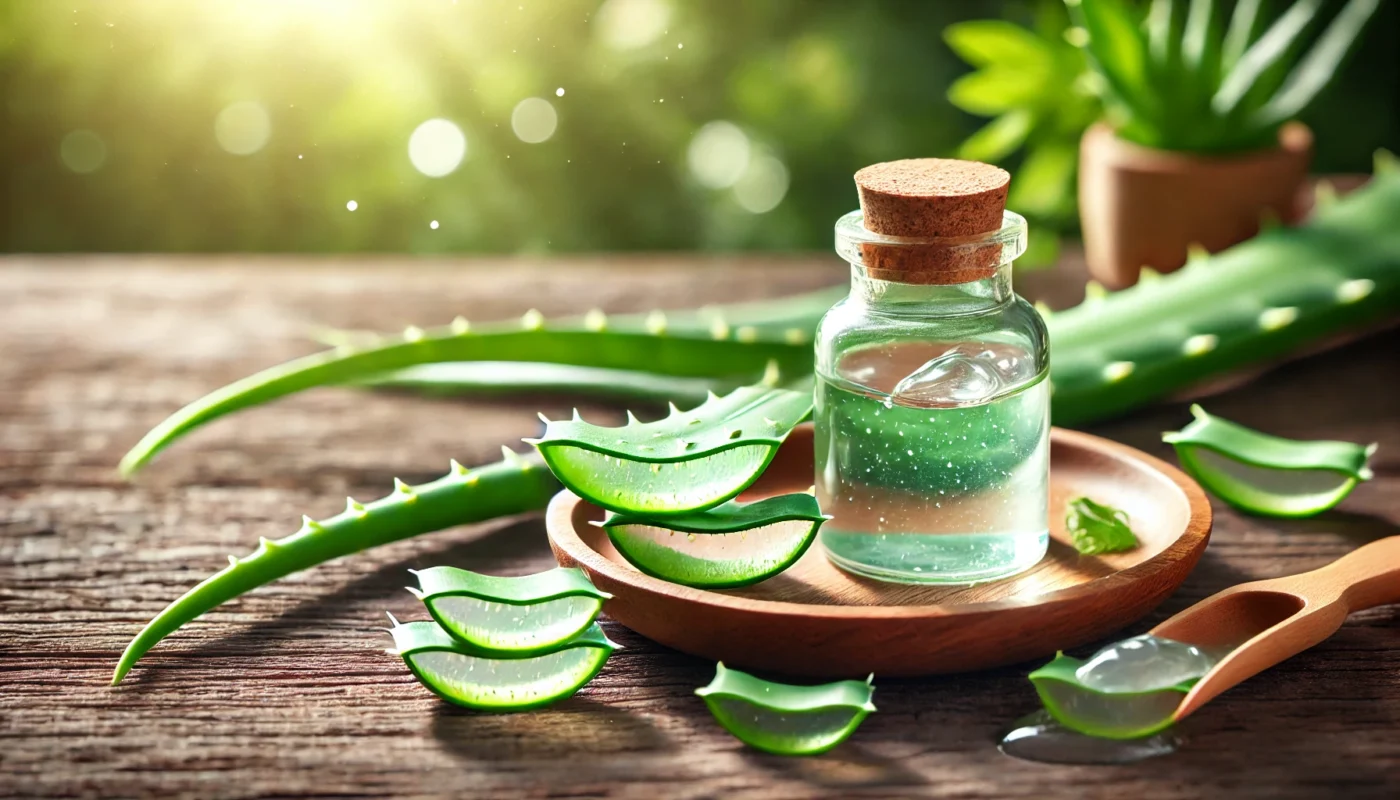The rejuvenating power of Aloe Vera has been celebrated for centuries, transcending cultures and time to remain a staple in holistic health practices. Among its myriad benefits, Aloe Vera’s soothing effect on sunburn stands out as a beacon of relief for those overexposed to the sun’s intense rays. But what does Aloe do for sunburn, and why is it hailed as a natural remedy? In this article, we delve into the science behind Aloe Vera’s effectiveness, explore its applications, and offer practical advice for integrating it into your sunburn relief regimen.
You may also like: Essential Tips for Sun Protection Daily
The Science Behind Aloe Vera and Sunburn
Aloe Vera, a succulent plant with thick, fleshy leaves, contains a gel-like substance that is packed with bioactive compounds. These compounds include vitamins, minerals, enzymes, and amino acids that work synergistically to promote healing and reduce inflammation. But how does Aloe Vera help sunburn?
Anti-inflammatory Properties
Sunburn is essentially an inflammatory response to UV radiation damage. Aloe Vera contains compounds like gibberellins and polysaccharides that exhibit potent anti-inflammatory properties, helping to calm the skin and reduce redness and swelling. These compounds work by inhibiting the production of pro-inflammatory cytokines, which are responsible for the redness and discomfort associated with sunburn. By reducing inflammation, Aloe Vera not only provides immediate relief but also aids in preventing further skin damage.
Furthermore, the anti-inflammatory effects of Aloe Vera can be compared to those of over-the-counter medications, making it a natural alternative. Its gentle nature makes it suitable for all skin types, even sensitive skin. Using Aloe Vera regularly can help build a protective layer against future sun exposure, reducing the likelihood of severe burns.
Moisturizing and Hydrating Effects
Sunburn can lead to dehydration of the skin, making it dry and itchy. Aloe Vera gel acts as a natural moisturizer, providing a protective barrier that seals in moisture. This not only alleviates dryness but also accelerates the healing process by keeping the skin well-hydrated. The gel’s unique composition, rich in polysaccharides, helps attract moisture to the skin, creating a soothing and cooling effect.
By maintaining optimal hydration levels, Aloe Vera promotes skin elasticity and prevents peeling, a common aftermath of sunburn. Its hydrating properties are particularly beneficial in hot climates where sun exposure is frequent. Regular application can help maintain the skin’s natural moisture balance, preventing the cycle of dryness and irritation.
Additionally, Aloe Vera’s ability to hydrate extends beyond the skin’s surface, penetrating deeper layers to nourish and repair damaged tissues. This deep moisturizing effect ensures long-lasting relief and supports the skin’s natural renewal processes.
Healing Acceleration
One of the most compelling aspects of Aloe Vera is its ability to expedite skin repair. The plant’s gel is rich in glucomannan, which interacts with growth factors to stimulate the regeneration of skin cells. This accelerates the healing of sunburned areas and reduces peeling. The presence of vitamins C and E in Aloe Vera further supports skin repair by promoting collagen production and enhancing skin elasticity.
Aloe Vera’s healing properties have been studied extensively, with research showing its ability to reduce healing time for burns and wounds. This makes it an invaluable asset for anyone seeking quick relief from sunburn. The gel’s enzymatic activity also aids in removing dead skin cells, paving the way for new, healthy skin to emerge.
By using Aloe Vera for sunburn, individuals can experience not only faster recovery but also improved skin texture and appearance. Its healing prowess is unmatched, making it a go-to remedy for sun-induced skin damage.
Practical Applications of Aloe Vera for Sunburn Relief
Given its remarkable properties, incorporating Aloe Vera into your sunburn relief strategy is a wise choice. Here’s how to make the most of this natural remedy:
Direct Application of Aloe Vera Gel
For those wondering, “is Aloe Vera good for sunburn?” the answer lies in its direct application. Break off a leaf from an Aloe Vera plant, and extract the gel. Gently apply it to the affected area, ensuring complete coverage. The soothing sensation is immediate, and for optimal results, reapply several times a day. The cooling effect of the gel provides instant relief from the burning sensation often associated with sunburn.
It’s essential to ensure that the gel is applied evenly over the sunburned area. This helps in maximizing its healing potential and ensuring that all affected skin cells benefit from its properties. Regular application, especially in the early stages of sunburn, can significantly reduce recovery time and discomfort.
For those who prefer a more intensive treatment, consider leaving the gel on overnight. Covering the area with a breathable bandage can enhance absorption and provide continuous relief.

Aloe Vera Juice for Sunburn
Aloe Vera juice, derived from the plant’s inner leaf, can also be beneficial. While it’s primarily consumed for internal health benefits, its topical application can provide an additional layer of hydration and soothing relief. Simply soak a clean cloth in Aloe Vera juice and apply it to the sunburned area. This method can be particularly effective for larger areas of sunburn where direct gel application may be less feasible.
The juice acts as a natural toner, refreshing the skin and reducing the sensation of heat. Its lightweight texture allows for quick absorption, making it a convenient option for on-the-go relief. Moreover, the juice can be mixed with other natural ingredients like cucumber or chamomile for enhanced soothing effects.
For an added cooling sensation, consider refrigerating the Aloe Vera juice before use. The chilled liquid can provide an extra layer of comfort, especially during hot weather.
Commercial Aloe Vera Products
For those without access to fresh Aloe Vera leaves, numerous commercial products are available. When selecting an Aloe Vera lotion for sunburn, look for products with high concentrations of Aloe Vera and minimal additives. The best aloe product for sunburn should be free from alcohol and fragrances, which can further irritate the skin.
It’s important to read labels carefully to ensure you’re getting a quality product. Some commercial Aloe Vera gels contain as little as 10% Aloe, rendering them less effective. Opt for products that list Aloe Vera as one of the first ingredients for maximum benefit.
In addition to gels, consider using Aloe Vera sprays or lotions that offer the convenience of easy application. These products can be a practical addition to your skincare routine, providing consistent relief and hydration.
Complementary Treatments for Sunburn
While Aloe Vera serves as an excellent remedy for sunburn, combining it with other treatments can enhance its effectiveness.
Hydrocortisone Cream for Sunburn
A common query is whether hydrocortisone cream is good for sunburn. This topical steroid can reduce inflammation and itching when used appropriately. It can be applied in conjunction with Aloe Vera gel, but it’s advisable to consult with a healthcare professional before combining treatments. Hydrocortisone can provide targeted relief for severe cases of sunburn where inflammation is pronounced.
When using both Aloe Vera and hydrocortisone, it’s best to apply the Aloe Vera first, allowing it to absorb fully before applying the cream. This layering approach maximizes the benefits of both treatments, ensuring comprehensive care for sun-damaged skin.
Always follow the recommended dosage for hydrocortisone and discontinue use if irritation occurs. It’s intended for short-term relief and should not replace a consistent skincare routine.

Moisturizers and Lotions
In addition to Aloe Vera, consider using a gentle moisturizer to maintain skin hydration. When asking, “should I put moisturizer on sunburn?” the answer is yes, especially if it’s formulated for sensitive skin. This helps to lock in moisture and further soothe the skin. Look for moisturizers that contain ingredients like hyaluronic acid or ceramides, which support the skin’s barrier function.
Using a combination of Aloe Vera and moisturizer can create a synergistic effect, enhancing the skin’s ability to retain moisture. Apply the moisturizer after Aloe Vera to seal in its benefits and provide an additional protective layer.
For best results, choose fragrance-free and hypoallergenic moisturizers to minimize the risk of irritation. This is particularly important for skin that is already sensitive due to sunburn.
Calamine Lotion and Other Options
Calamine lotion is known for its cooling effect and can be used alongside Aloe Vera for added relief. It’s particularly beneficial for sunburns that are itchy and uncomfortable. The lotion works by creating a protective barrier on the skin, reducing the urge to scratch and further damage the skin.
For those experiencing significant discomfort, consider alternating between Aloe Vera and calamine lotion throughout the day. This approach can provide continuous relief and prevent the escalation of symptoms.
Other complementary options include oatmeal baths or cool compresses, which can further soothe inflamed skin. These treatments, when used alongside Aloe Vera, can create a comprehensive sunburn relief strategy.
Recommendations for Aloe Vera Use
To maximize the healing benefits of Aloe Vera, follow these guidelines:
Frequency of Application
Apply Aloe Vera gel or juice to the sunburned area multiple times per day. The frequency can vary based on the severity of the sunburn, but generally, 3-4 times daily is recommended. Consistent application ensures that the skin remains hydrated and soothed, reducing recovery time.
For severe sunburn, consider increasing the frequency to every two hours. This intensive approach can provide continuous relief and prevent the progression of symptoms. Always monitor your skin’s response and adjust the frequency as needed.
Best Aloe for Sunburn
Opt for pure Aloe Vera gel or products with a high Aloe content. Avoid those with added dyes, fragrances, or alcohol. Pure Aloe Vera offers the most potent healing properties, ensuring maximum benefit for sun-damaged skin.
If possible, choose organic Aloe Vera products to minimize exposure to pesticides and chemicals. This is especially important for sensitive skin prone to irritation. When using fresh Aloe Vera, ensure that the leaves are clean and free from contaminants.
Hydration and Protection
Stay hydrated and protect your skin from further sun exposure. Aloe Vera is most effective when used as part of a comprehensive sun care routine. Drink plenty of water to support skin hydration from the inside out, and wear protective clothing or sunscreen when outdoors.
Incorporating Aloe Vera into a broader skincare regimen can enhance its benefits and provide long-term protection against sun damage. Consider pairing it with antioxidant-rich serums or sunscreens for a holistic approach to skin health.

Conclusion
Aloe Vera’s role in sunburn relief is supported by both traditional wisdom and modern science. Its anti-inflammatory, moisturizing, and healing properties make it an indispensable tool in managing sunburns. By integrating Aloe Vera into your skincare regimen, you can harness its natural power to soothe, heal, and rejuvenate sun-damaged skin. Whether you’re a fitness enthusiast, health aficionado, or someone recovering from a sunburn, Aloe Vera offers a holistic approach to skin health, combining simplicity with effectiveness.
Incorporate these strategies into your routine, and embrace the soothing relief that Aloe Vera provides, ensuring your skin remains healthy, hydrated, and protected. By understanding its benefits and applications, you can make informed choices that enhance your skin’s resilience and beauty.
The efficacy of aloe vera used for burn wound healing: a systematic review
Aloe vera for sunburn: Does it work?
Efficacy of aloe vera cream in prevention and treatment of sunburn and suntan
Aloe Vera, sunburn relief, natural remedies, skin care, anti-inflammatory, moisturizing, Aloe Vera gel, Aloe Vera juice, healing properties, sun protection, skincare routine, hydration, calamine lotion, hydrocortisone cream, skin health, herbal medicine, soothing skin, healthy skin, home remedies, sunburn treatment.
Important Note: The information contained in this article is for general informational purposes only, and should not be construed as health or medical advice, nor is it intended to diagnose, prevent, treat, or cure any disease or health condition. Before embarking on any diet, fitness regimen, or program of nutritional supplementation, it is advisable to consult your healthcare professional in order to determine its safety and probable efficacy in terms of your individual state of health.
Regarding Nutritional Supplements Or Other Non-Prescription Health Products: If any nutritional supplements or other non-prescription health products are mentioned in the foregoing article, any claims or statements made about them have not been evaluated by the U.S. Food and Drug Administration, and such nutritional supplements or other health products are not intended to diagnose, treat, cure, or prevent any disease.

